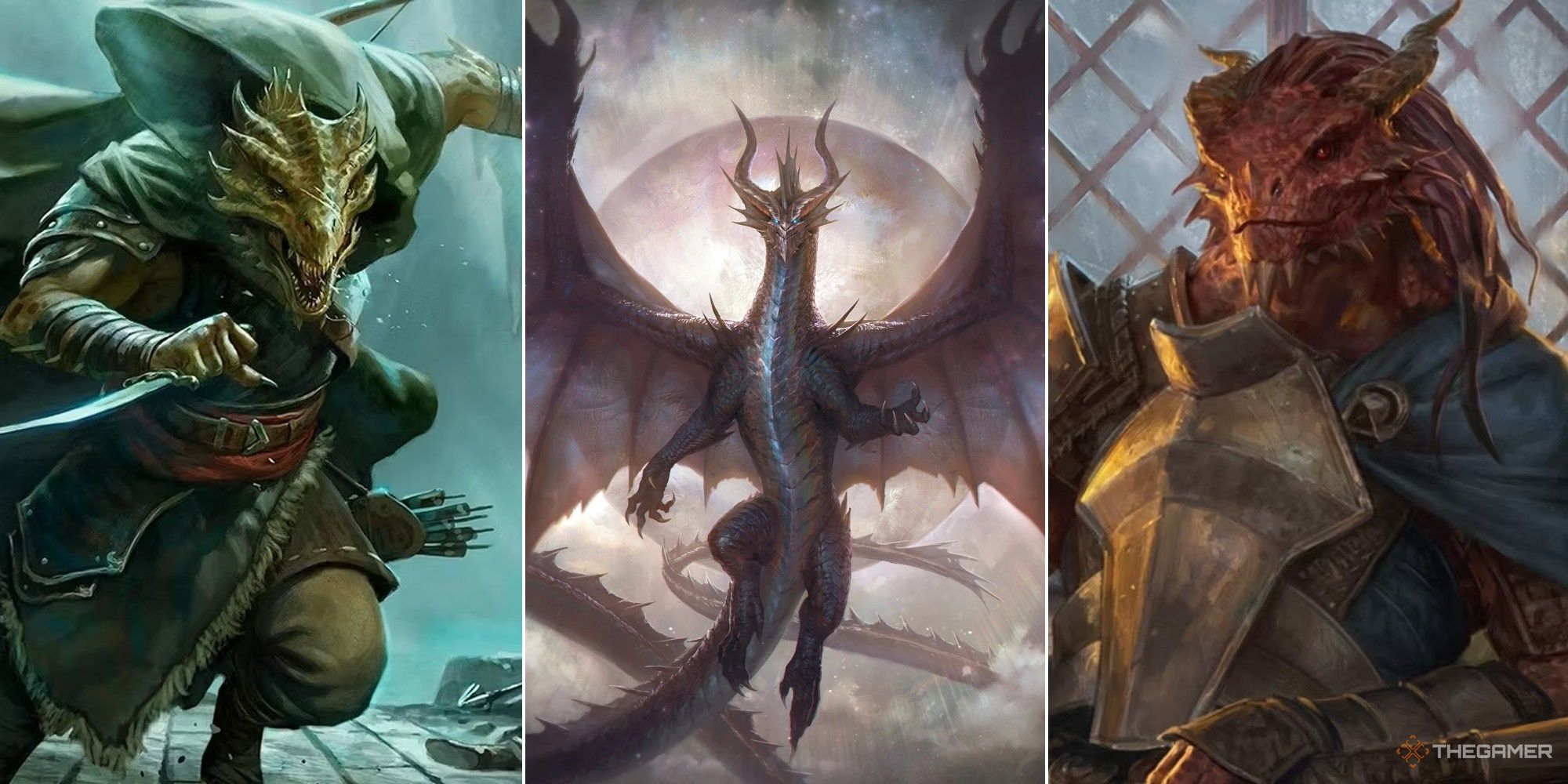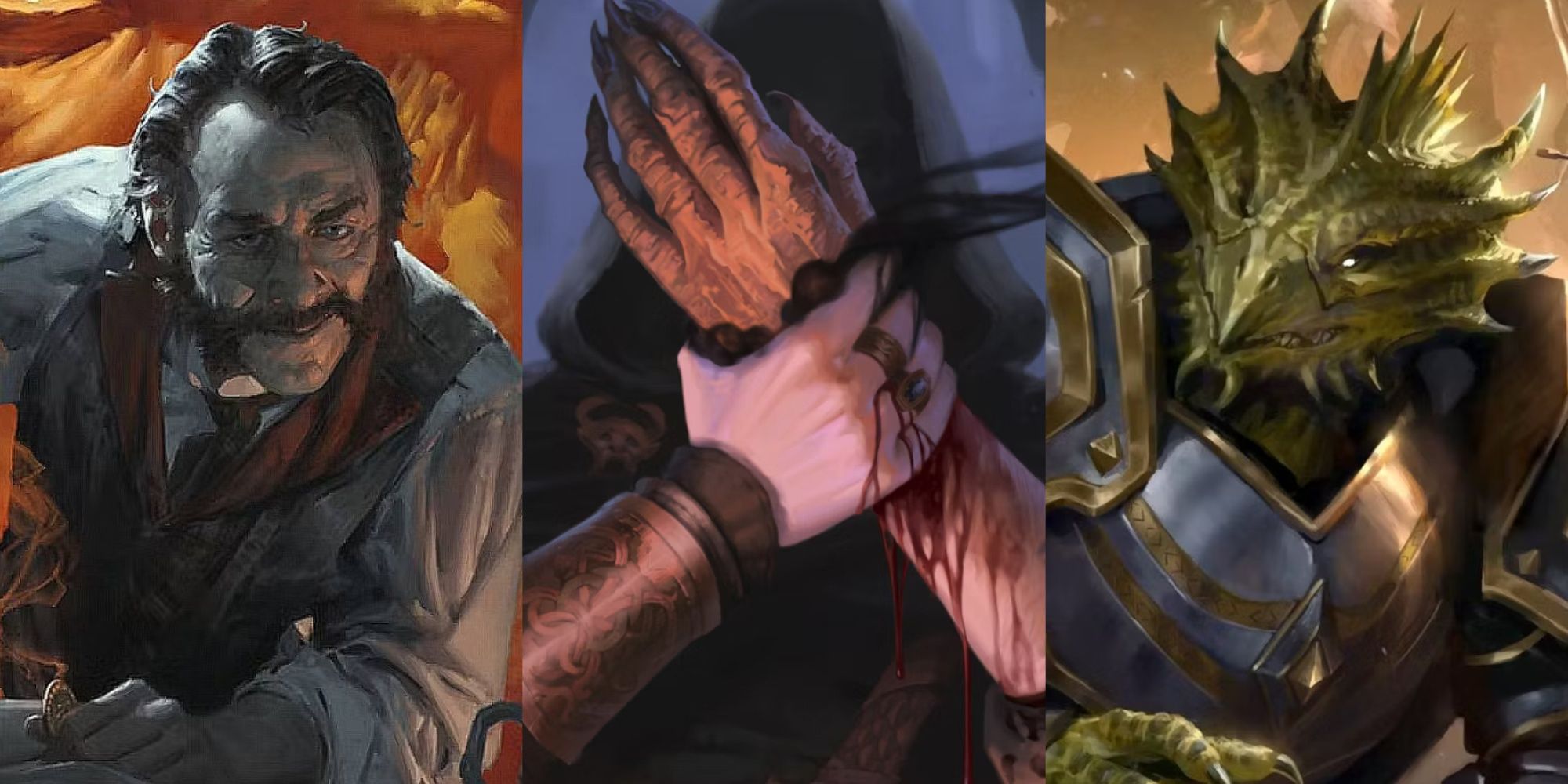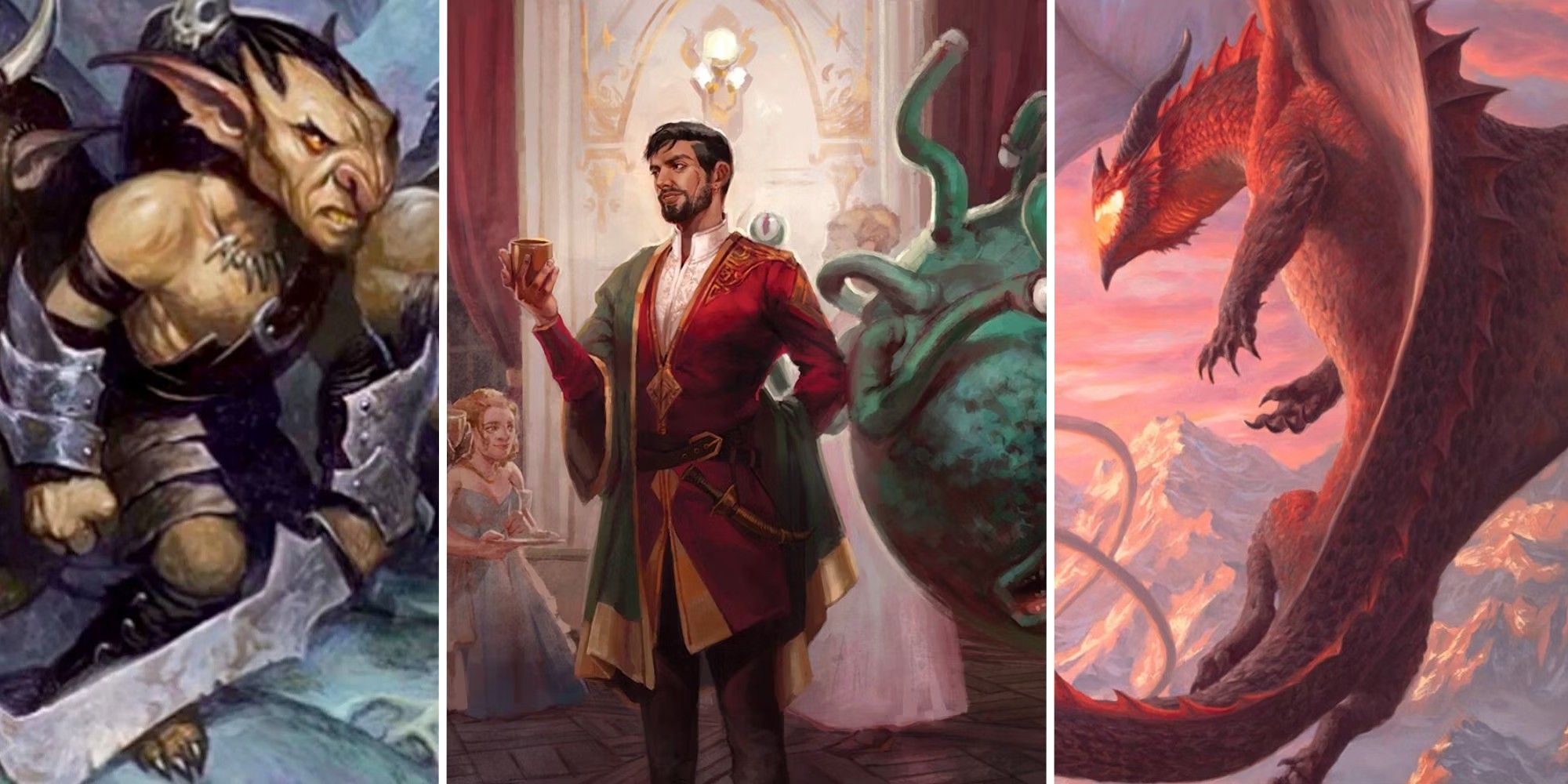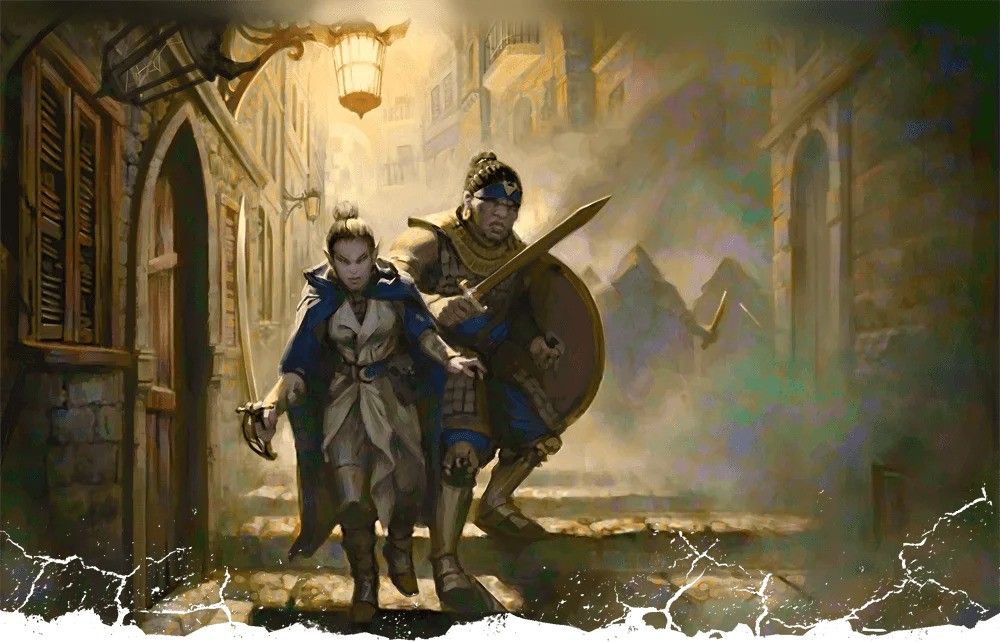For many players, combat is the most exciting part of Dungeons & Dragons. It’s a chance to bust out the minis, battle maps, and terrain. However, some groups don’t have the resources, enough space, or even the desire to set up miniature battle encounters.
Dungeons & Dragons: How To DM An Evil Campaign
Wild cackles, raised eyebrows, and nefarious plans await in Evil Dungeons & Dragons.
The imagination is a powerful thing. Some groups prefer to play out their combat encounters as they do for the rest of the game – using their imagination. ‘Theatre of the mind’ combat can be just as exciting as using miniatures and maps. With good descriptions and the right preparation, DMs can deliver thrilling combat encounters without any props.
De-Emphasize The Tactical
Miniatures and battle maps with grids allow for high tactical complexity. Players can move their characters exactly where they want to while considering the placement of enemy units. Theatre of the mind combat takes away some of this agency. However, DMs can circumvent this shortfall by giving the players more information and fewer overall options.
Without battle maps or terrain, players need more description. They can’t see the barrels, overturned tables, and boulders typically used for cover, so the DM needs to tell players these things exist in clear language.
When de-emphasizing the tactical part of combat, favor the players in adjudicating the rules. The DM’s role should never be adversarial. DMs are there to facilitate play and help the players tell an awesome story.
One way to avoid the pitfalls of theatre of the mind combat is to ask players to describe their actions and intentions. You need your players to give vivid and functional descriptions without visual representation. In a session with maps and minis, it’s apparent that a character is in cover if they move behind an object.
In a session with minis, the player simply moves their character where they want. The visual feedback tells us if they are in range, vulnerable to attack, or partially hidden by cover. In a theatre of the mind session, all these things must be established through speech. The player must state: “I move into attack range and take cover behind a barrel.” Intention is important!
Make Allowances For The Lack Of Visuals
Battle maps make things pretty clear. For this reason, when a player tries a high-risk, low-reward maneuver in such a game – the outcome is on them. Things aren’t quite as simple when running a theater of the mind game.
Rather than being foolhardy, the player charging directly at their death might have misinterpreted what you said. Rather than allowing your players to take an action you know will fail, explain further and give them a chance to correct course. The monsters in the story are adversarial – the DM shouldn’t be.
You may also need to telegraph the presence of interactive environmental stuff in a way that’s unnecessary with a battle map. Some players are naturally curious and will ask – “Can I jump and swing on that chandelier?”. Other players require more prompting and more obvious setups.
Tips For DMs In Theater Of The Mind Combat
Describe The Situation Between Turns
Each time a new character’s turn begins, describe the situation from their perspective. Explain the position of enemies relative to where the player is. Remember, our role is to help the players participate in an epic story. Give the player information that they can use to make their turn count.
Theatre of the mind doesn’t mean you can’t use any visual references. A basic drawing or diagram can help players understand the combat’s location and tactical potential. Point out flammable casks, dangling chandeliers, or poorly supported galleries that an eldritch blast could collapse.
Keep these features light in theatre of the mind combat. Don’t paralyze your players with too many choices they can’t see.
Use High-Fantasy Narration
Miniatures, battle maps, and terrain look incredible. The artwork in these game aids can help immerse players in the fantastical adventure you’re telling. The imagination is an even more powerful tool but must be fed with quality description.
Keep descriptions quick and vivid. Your player should feel a sense of urgency and get constant reminders about the “why” of the battle. What are the enemies protecting? Why are they here? Are they fighting willingly or under duress? What do their facial expressions tell you about their motivation?
Give your players a chance to narrate, too. When a player lands a killing blow, let them describe it however they see fit.
Manage Distance
Battle maps with their grids carefully divided into five-foot squares give players agency. A player can know whether an enemy is in range or whether they can close the distance on their turn. Think about distance in theatre of the mind more loosely.
Your players don’t need exact measurements as much as they need utility. “Both of these kobolds are one move action away” is more useful than “This kobold is about ten feet from you, and the other is fifteen feet away.”
It’s harder for players to keep track of enemies on a constantly shifting battlefield with no visual representation. Work around this by resetting your description at the start of each turn and creating smaller encounters in general.
Tips For Players In Theater Of The Mind Dungeons & Dragons
Describe Your Intention And Action
The DM is not fighting against you as a player. For this reason, holding back secrets from the DM won’t give you an advantage – especially not in theatre of the mind combat. If you intend to hide behind a narrow doorway, ready to attack any enemies that rush in, tell your DM all that information.
If the DM knows why and what you want to do, there’s a much greater chance for epic cinematic moments. DMs often reward players for interesting descriptions, thinking outside the box, or unexpected uses of terrain or scenery. When you get into the habit of explaining your intentions, you may unlock more exciting ways to use your turn.
Ask Specific Questions
With a grid map, spellcasters can see who their area of effect (AoE) spells will hit and who they’ll miss. In theatre of the mind combat, this can be harder to establish. The quickest way to find out is to ask the DM – “If I cast a fireball, can I hit these two goblins without affecting Bruce the Paladin?”
In theatre of the mind combat, a lot is left up to the DM’s discretion. If your idea is cool, the DM mightn’t stress too much about the exact measurements and distances. The focus is on fantastical storytelling and fun.
Look For Ways To Use The Environment
Theatre of the mind combat typically uses fewer environmental features and hazards than battle map combat. This is understandable. It’s harder to keep track of objects using only the imagination.
But feel free to take advantage of any environmental stuff the DM does mention. If he mentioned barrels, ask if there’s a mark on them. They could make an improvised explosive or useful cover depending on what’s inside.
Don’t hesitate to ask the DM about your surroundings, too.
They may have neglected to mention doorways, windows, light fittings, or a host of other things that you could find useful.
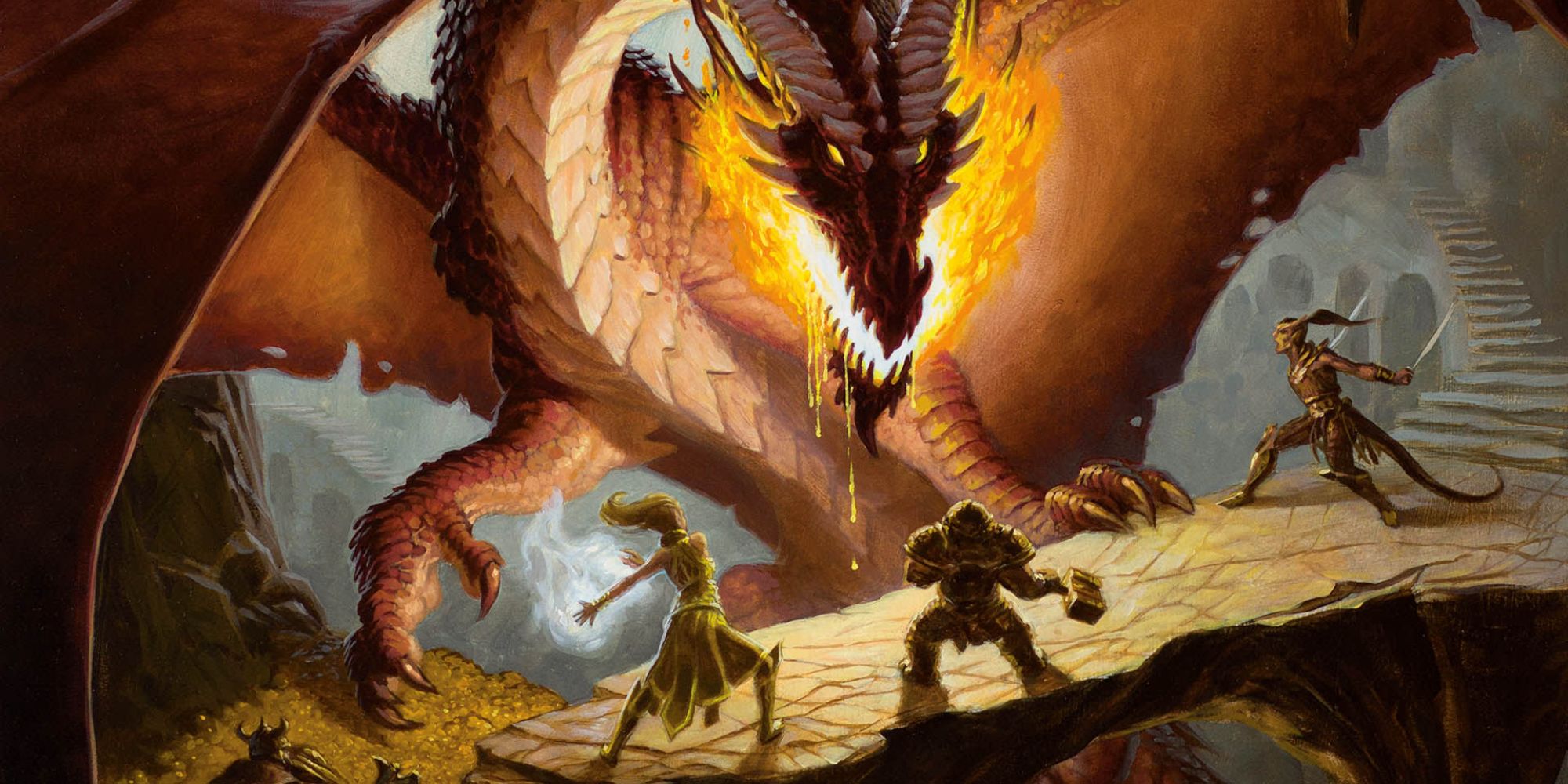
Dungeons & Dragons: How To Roleplay A Dragon As A DM
Fierce and dominating, dragons can make characters in your D&D campaign.


